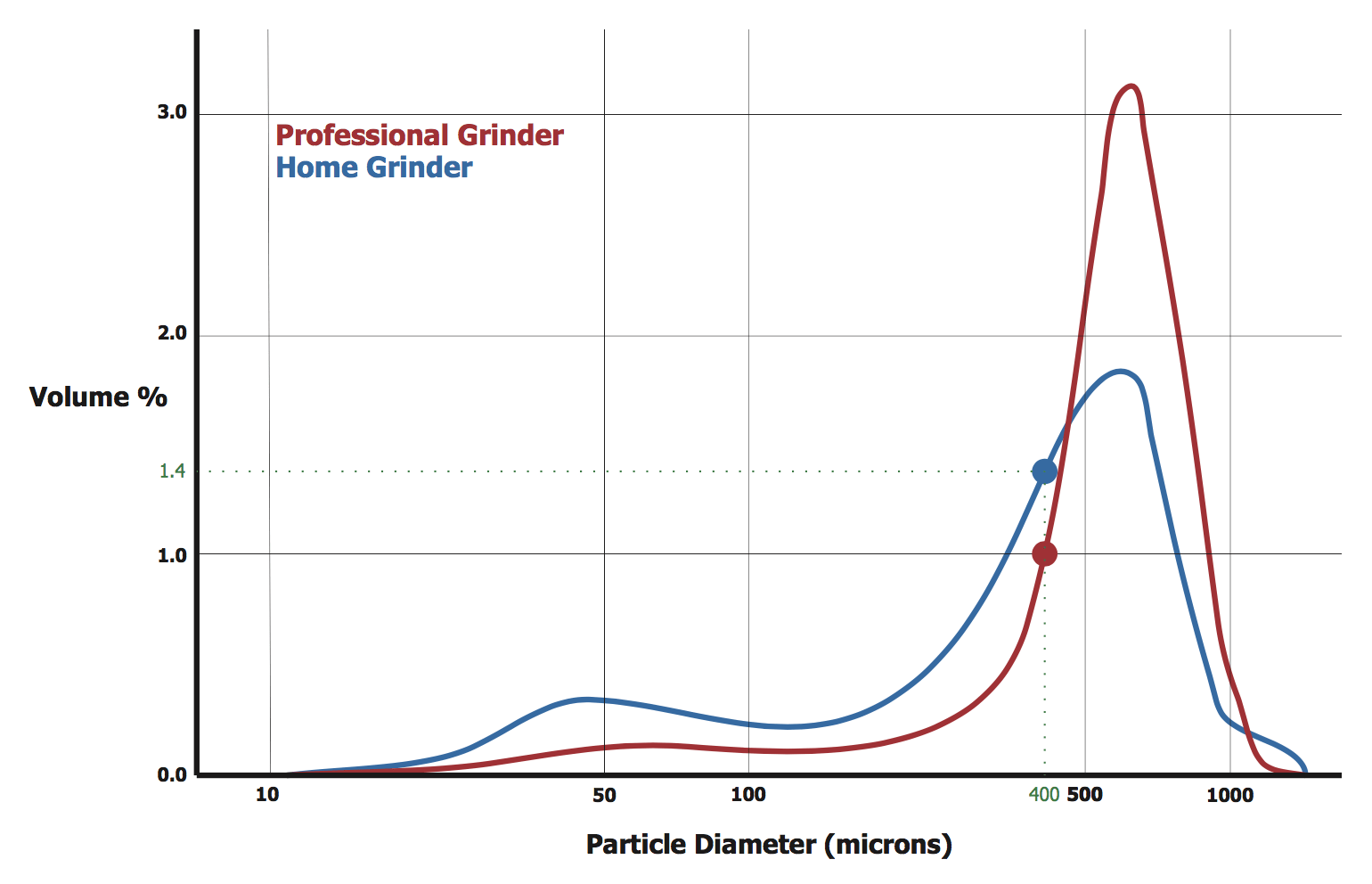22% Plus
If you have awesome equipment and well-developed coffee, your coffee will usually taste balanced at higher extraction yields. There’s a serendipitous cost benefit here: with better quality coffee and equipment, you don’t have to use as much coffee. Take an exaggerated example of sieved coffee:
When Matt Perger won the 2012 World Brewers Cup, he started what would become a trend for sieving coffee. He served his coffee at 24% extraction, but it tasted optimum. Matt sieved out the very fine particles below 250um. These particles constituted more than half his surface area but weighed less than 20% of the total dose of grinds. Without these fines over-extracting, he was then able to move the rest of the 80% of his coffee further to the right of the brew control chart than normal. This is where the 80% would “prefer” to be. If we extract the 80% to this level but don’t remove the fines, the fines will be very over-extracted. In traditional cases, we have to “hold them back” to reduce the impact of the 20% that is over-extracting.
Returning to the graph from the prologue; where you have a large spread of particle sizes (like the blue line on the graph) you’re likely to get a lot of over-extraction from that smaller peak on the left side of the graph. If you look at the 100 um line on the x-axis, the blue grinder has 0.2% volume and the red grinder has 0.1%. Remember for every particle above 100 um in diameter, there are 100 million below. So if there are twice as many on the blue curve than the red curve at this particular grind size, we can safely assume the blue grinder has many billions more fines than the red grinder.
The impact of fines is not specifically negative. Perhaps the reason people enjoy Ibrik coffee as much any other brew method is that it harnesses the power of fines. Traditionally, Cezve/Ibrik grind settings aim for as fine a grind setting as possible.
